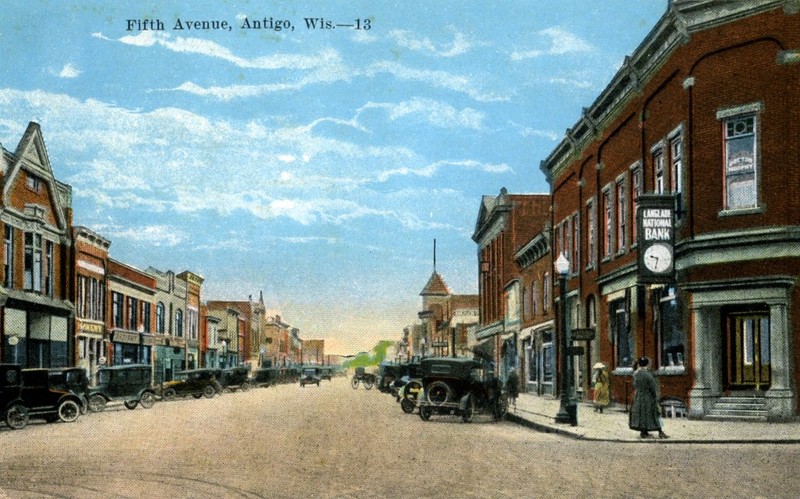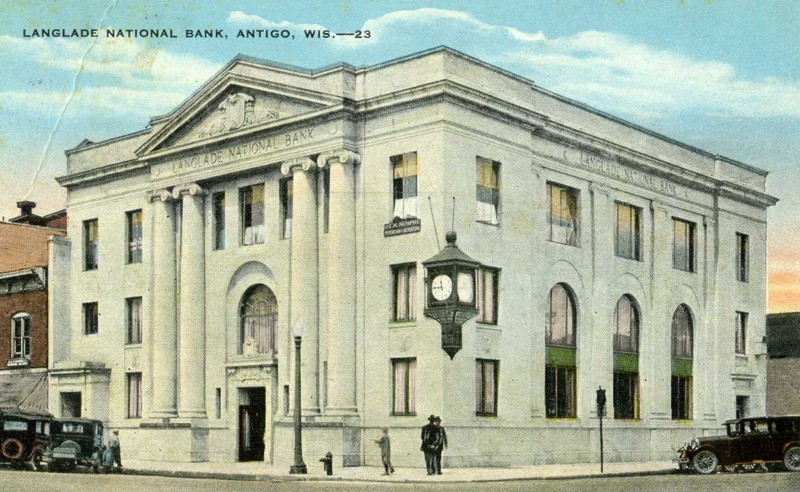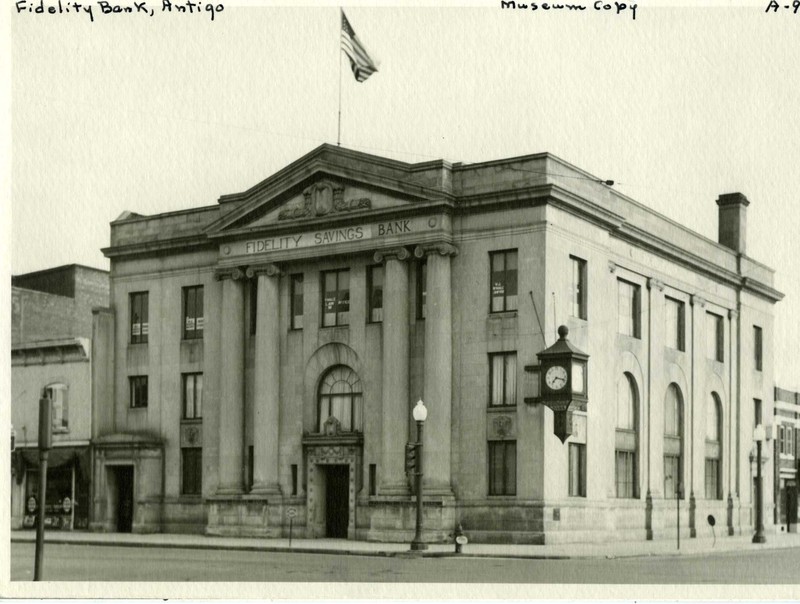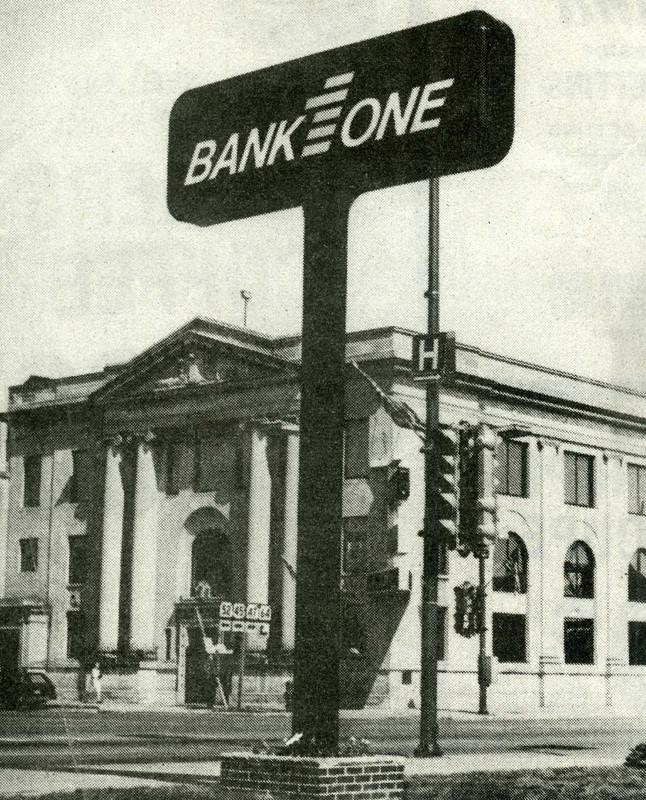Chase Bank Building
Introduction
Text-to-speech Audio
A monumental structure highly visible along the highway, the current Chase Bank building has been an Antigo landmark for a hundred years. Although the current structure was built in 1923, the property has always been used for a bank, changing hands and re-branding many times throughout the town’s history. Originally, it was home to Langlade National Bank, which was Antigo’s primary banking institution until the Great Depression. The exterior of the structure has remained largely unchanged since the 1920s.
Images
The original Langlade National Bank structure in the 1910s.

The renovated concrete structure in the 1920s, whose exterior has remained largely unchanged.

The building as owned by Fidelity Savings Bank, ca. 1930s-40s.

The building under new ownership by Bank One in the 1990s.

Backstory and Context
Text-to-speech Audio
Antigo’s very first bank, Langlade County Bank, was founded in 1881 shortly after the town’s own founding, by pioneer L.D. Moses, on the corner of Fifth and Superior where Chase Bank now stands, and remained largely the same until it was reorganized as a national bank (that is, regulated by the Department of the Treasury under the National Banking Act) in 1901, when it was re-branded to Langlade National Bank. Initially a more modest, brick structure, the Langlade National Bank was remodeled in the early 1920s into the current grand, imposing structure.
In March 1933, in the throes of the Great Depression, all banks in the United States were temporarily closed by executive order as the national financial industry scrambled to reorganize and sustain itself. Many banks did not survive this process, and, in 1934, Langlade National Bank began leasing its space to the Fidelity Savings Bank.
Originally founded in 1909 and located on the corner of Fifth and Clermont (the location of BMO Bank in 2022), Fidelity Savings Bank would go on to be Antigo’s only financial institution between 1934 and 1938. Now operating out of the structure on Fifth and Superior, the bank continued to grow over the decades. In 1958, a drive-thru was added to the west side of the building, featuring a turntable which allowed cars to drive up to the teller’s window and then be automatically turned back out onto the street in the tight space; this facility was eventually demolished in 1974 when a new drive-thru was built kitty-corner from the main building on the other side of Superior Street. An electronic sign displaying the time, date, and temperature was added to the exterior in 1961, and was an iconic part of downtown until it was removed during the widening of Superior Street in the 1990s. In 1963, the interior was renovated.
In the late 20th century, Fidelity Savings Bank was acquired by Marine Corporation, one of the largest banking companies in Wisconsin, and re-branded as Fidelity Marine Bank. Then, in 1987, Marine Corporation merged with Bank One Corporation, causing the bank at Fifth and Superior to re-brand once again. Finally, in 2005, Bank One merged with JPMorgan Chase & Co, in 2004, the current owners of the bank.
Sources
Antigo Daily Journal. “Arrival of Chase in Antigo Celebrated,” May 9, 2005, Vol. 100, No. 197.
Dessureau, Robert. “Chapter XIII: Banks and Finances, Langlade County,” in The History of Langlade County (Antigo, WI: Berner Bros. Publishing Co., 1922), 55–56.
“Fidelity Savings Bank.” In Business and Industry. Antigo-Langlade County Centennial Historical Monographs, Vol. III of VIII. Antigo, WI, 1979.
Kingsbury, Arthur J. Arthur J. Kingsbury Postcard Collection. Early 1900s. Photography. Langlade County Historical Society.
Ross, Philip E. “COMPANY NEWS; Milwaukee’s Marine Takes Banc One Bid.” The New York Times, July 25, 1987, sec. Business. https://www.nytimes.com/1987/07/25/business/company-news-milwaukee-s-marine-takes-banc-one-bid.html.
Kingsbury, Arthur J. Arthur J. Kingsbury Postcard Collection. Early 1900s. Photography. Langlade County Historical Society.
